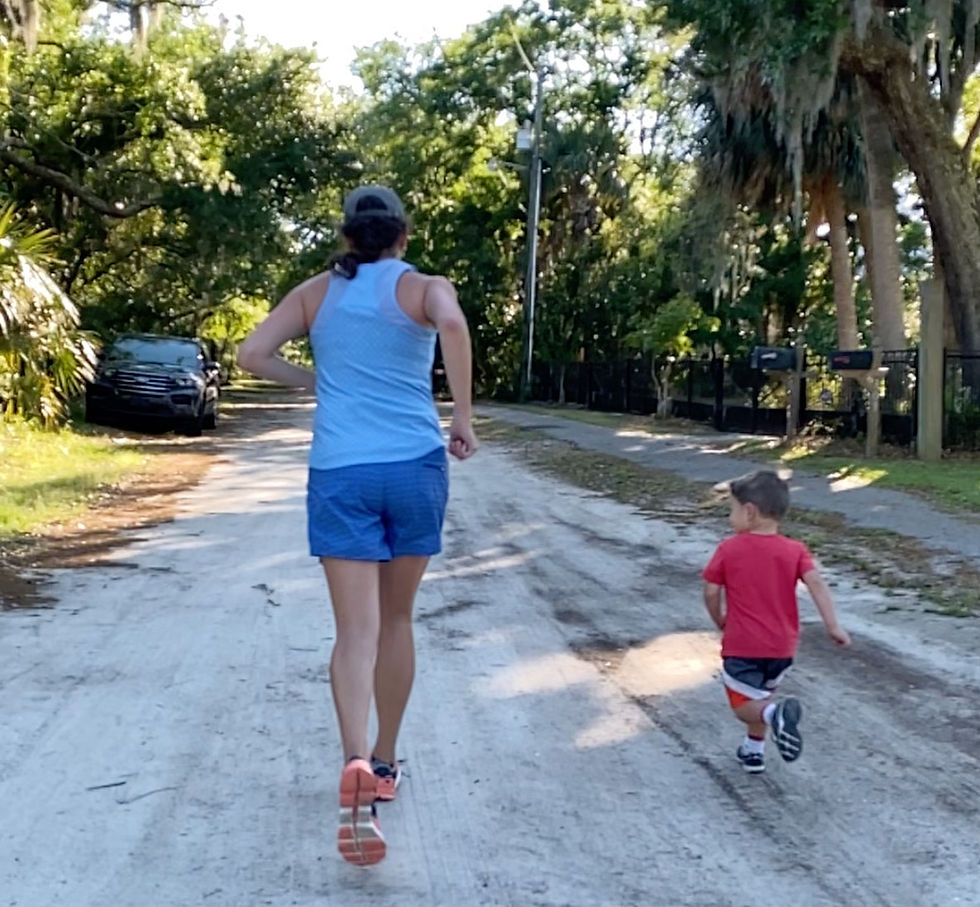8 Tips for Pain/Symptom Free Running
- Hannah Bangel

- May 2, 2022
- 2 min read
We know that running is a go-to for a lot of our moms because you can get out the door quickly, no equipment needed, and you can go for however long you have time for!
Running is a great form of cardio and has many benefits - increases stamina, boosts immune system, strengthens your heart, and can reduce stress and anxiety - BUT running is a high impact activity and can cause muscle imbalances if your body isn't prepared for it.
Did you know 1 in 3 women experience some degree of pelvic floor symptoms that range from leaking, to urgency, to pain or heaviness? That number increases when we look at moms who are running and doing high impact workouts! Nobody wants to wear a pad and black leggings every time they run!
Here are some tips to help decrease pain and/or pelvic floor symptoms during running:
1. Orientation is key - “Tits over toes”
Hinge forward from the ankle, stacking the egg (ribs over pelvis).
This will help with forward momentum.
This also helps get your core muscles engaged and ready to anticipate your movement.
2. Arm swing - Mini Punches
Lots of arm movement especially across the body is wasted energy.
Swinging arms across the body usually means you’re rotating through your trunk less.
If you’re rotating less in your trunk, that rotation will likely show up more somewhere else - probably your hips/pelvis!
3. Stroller Running - go with what feels best to you!
2 hands pushing tends to decrease trunk rotation.
1 hand can play with your asymmetries.
4. Wear two sports bras if you are breastfeeding
This can help to take some strain and pressure off your back.
5. Don’t look down
Choose a spot 15-20 feet in front of you so you don’t wind up hunching over.
This will also help you keep your “egg” stacked.
6. Make sure you’re breathing
Yes, we need to breathe to stay alive BUT breathing has tons of other benefits and one of them is pressure management.
If we’re constantly taking shallow breaths we’re never allowing our pelvic floor muscles to lengthen and this can lead to dysfunction like leaking, pain, or heaviness.
While you’re running, try to take long and slow breaths (“down and out”) to allow your pelvic floor muscles learn how to be strong and coordinated when you run.
7. No Kegels when you run!
This one goes along with the breathing.
Trust your training.
Trying to contract your pelvic floor muscles during running will only end up making them fatigue faster and possibly contribute to your symptoms more.
8. Increase your cadence
Research shows that if you increase your cadence by 5-10% you can reduce the impact that running has on your body.
To do this, you’ll reduce your speed, but increase your step rate (the goal is to have shorter, quicker steps).
The goal is to aim for a cadence of about 170 beats per minute (bpm), which is super fast, we know!
You can also choose music that has a faster bpm to help you keep pace.
Curious what you actually look like when you run and how that ties in with your symptoms? Call us to schedule your running analysis and we’ll tell you along with strategies you can start putting into practice now!







Comments